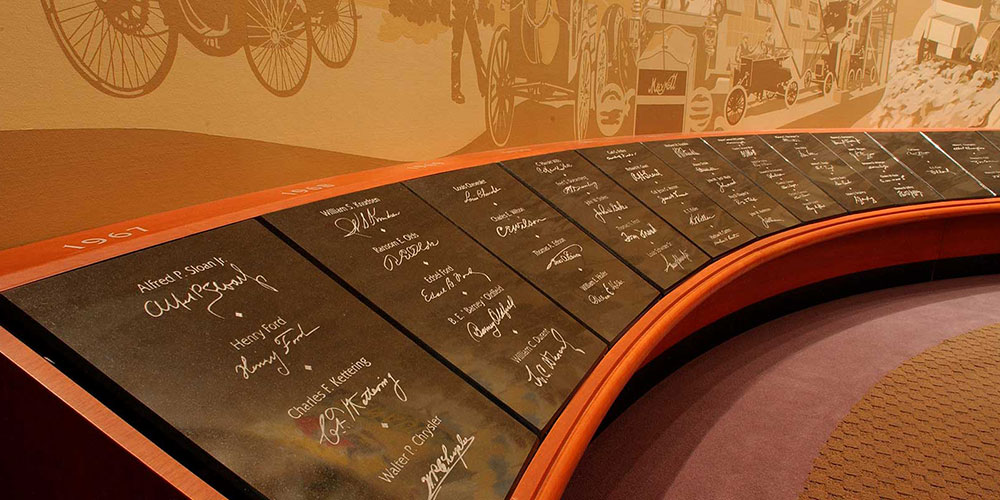By Robert Tate, Automotive Historian and Researcher
Images Courtesy of the Robert Tate Collection
Published 05.08.2019
 1941 Nash Ambassador (Robert Tate Collection)
1941 Nash Ambassador (Robert Tate Collection)
Nash was called a new kind of car when their 1941 models were introduced to the public on October 1, 1940. The Ambassador 600 offered a unitized body frame design and a great look that most consumers admired. George Mason was president of the Nash Kelvinator Company at the time, with founder Charles W. Nash as chairman of the board.
 1941 Nash frame strength built into a car body (Robert Tate Collection)
1941 Nash frame strength built into a car body (Robert Tate Collection)
Sales for Nash were up sharply because of the many features available for consumers. The Nash Ambassador Six was available in the new lower-price category. The models were entirely new in 1941 and offered a “Flying Scot” engine, which was popular when it came to performance. Nash manufactured 80,408 units in the calendar year, a huge gain for the company.
In 1941, Time magazine described the Nash 600 models as the only completely new car for 1941. Nash had pioneered a single-unit construction, or as it was called then, “Unitized Construction.” This method was developed by Ted Ulrich of the Budd Company, the creator of America’s first mass-produced unit-bodied car.
 1941 Nash (Robert Tate Collection)
1941 Nash (Robert Tate Collection)
The 1941 Nash models offered many great features. The driver could accommodate four passengers in the front seat while traveling or just for regular driving around the city. Nash also included hi test safety glass and bumpers for all its vehicles. A two-door fastback sedan was later added to the body style options after the 600 model series had been in production for a short time.
 1941 Nash Coupe Brougham (Robert Tate Collection)
1941 Nash Coupe Brougham (Robert Tate Collection)
The 600-model series was so new that no part of it would interchange with any previous Nash products. Some automotive historians have said that the models offered the first major change in assembly line procedures since the introduction of the popular Lincoln Zephyr models by the Ford Motor Company. Another popular model in the Nash series was the convertible coupe with its automatic top. The Nash convertible coupe models were completely automatic for the consumer market. To lower the top, the consumer would simply turn two thumb screws at the top of the windshield, loosen the catch and then push a button on the instrument panel. As the top was being lowered, vacuum cylinders would do the work in 12 1/2 seconds. These convertible models were very popular during the 1940s, and today they are very hard to find and collectible. The sticker price for a new 1941 Nash was $835.
 1941 Nash Ambassador Convertible (Robert Tate Collection)
1941 Nash Ambassador Convertible (Robert Tate Collection)
It should also be noted that the Nash Ambassador 600 series offered great fuel economy. They were the first production vehicles that could reach 25 to 30 miles per gallon of fuel, with the handling ease of a small car and big car size, comfort and performance.
Finally, one of the most popular features of the 1941 Nash sedan models was the ability to turn your vehicle into a sleeping car. You could park your vehicle at some pleasant spot near the road or along a trail and make up your bed in less than three minutes. The consumer would simply lift the back of the rear seat and roll the seat cushion forward on its tracks. An attached mattress would fold down into the space previously occupied by the cushion. The consumer could than place a mattress pad over the platform in the trunk area and include sheets and blankets for added comfort.
 A 1941 Nash converted to a sleeping car (Robert Tate Collection)
A 1941 Nash converted to a sleeping car (Robert Tate Collection)
In conclusion, the 1941 Nash models will always be a part of our automotive history.
Bibliography
Brown, Arch. “1941 Nash 600.” Special Interest Autos, December, 1980, pg. 46.
“Family Album.” American Motors Corporation. First edition, February 1969.



